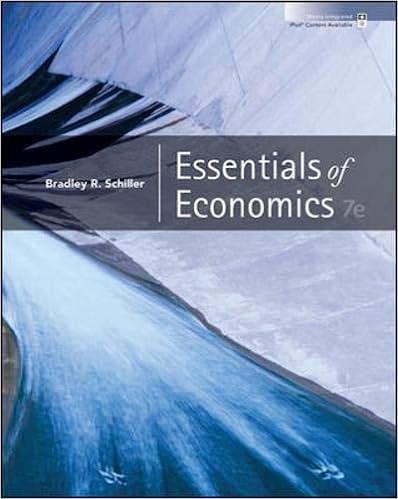Question
This exercise explores the nature of insurance contracts. We examine a pervasive feature of actual insurance contractsa requirement that the purchaser bear part of the
This exercise explores the nature of insurance contracts. We examine a pervasive feature of actual insurance contractsa requirement that the purchaser bear part of the cost of any claim. For example, health insurance policies typically require the policy holder to pay some of the costs of medical care, and accident policies typically incorporate a deductible, requiring an agent to pay some of the cost. Consider a case in which there are there are two possible states. In state one, the agent has income (or, equivalently in this case, wealth) of 100. In state two, the agent suffers an accident that imposes a loss L = 75, and hence has a net income (or wealth) of 25. The agent's utility for money is given by u(c) = c
3.1 Calculate this agent's expected utility, under the assumption that the two states are equally likely. 1 3.2 Now suppose that, at a cost of 16, the agent could reduce the probability of a loss, i.e., reduce the probability of state two, to 1/4. Hence, the agent's net income would be 84 in state one (100 minus the 16 paid to reduce the risk of a loss), and 9 in state two. For example, the agent may install smoke alarms that make a catastrophic fire less likely, install anti-lock brakes on her car, install a security system in her house, stop smoking, and so on. Would the agent pay the cost to reduce the risk of loss? Answer this question by calculating and comparing the relevant expected utilities.
3.3 Suppose now that, after paying the 16 to reduce the risk of a loss, and hence ensuring the probabilities of state one and two are 3/4 and 1/4 respectively, the agent can buy insurance. The agent chooses the quantity z of insurance to buy. If the agent chooses quantity z, then the insurance company pays the agent the amount z if state two occurs, and the agent pays the amount z in both state one and two. Assuming that the insurance company just breaks even on this contract, identify the value of the company would be willing to offer to the agent. Write the agent's budget constraint given this insurance policy. Find the optimal consumption bundle for the agent. Calculate the agent's expected utility.
3.4 Now suppose that before accepting the insurance policy, the agent can decide whether to spend the 16 to reduce the probability of a loss. The insurance company cannot observe whether the loss-prevention has been undertaken or not. (The insurance company may not be able to tell whether the agent has really stopped smoking, for example.) Suppose that whatever the agent does, the insurance company believes the risk has been reduced, and hence offers the contract described in 3.3. Will the agent reduce the risk in this case? Answer this by calculating the agent's expected utility, given that she does pay the cost to reduce the risk and then assuming that she does not, in each case having available the insurance contract from 3.3. If the agent does not reduce the risk, what will the company expected profit be?
3.5 Insurance companies often write policies with a deductible provision. A deductible essentially caps the amount of the claim the insurance company will pay, forcing the agent to bear some of the loss. For example, the insurance company might pay at most 65 of a loss. Suppose the insurance company modifies the insurance contract described in 3.3 (i.e., a contract appropriate when the probability of a loss is 1/4) by imposing an upper bound z (not necessarily 65) on the payment to the agent in the event of a loss. The corresponding premium is set so that the insurance company just breaks even, given probability 1/4 of a loss. Now will the agent be better off paying the 16 to reduce the probability of a loss, or not doing so? Explain how your answer depends on the value of z. Notice that if the amount of insurance that maximizes the utility of the consumer is larger than z, the optimal feasible choice is buying an amount of insurance z.
3.6 In light of your previous answers, explain why insurance companies might find it best to include a deductible provision in their insurance policies
Step by Step Solution
There are 3 Steps involved in it
Step: 1

Get Instant Access to Expert-Tailored Solutions
See step-by-step solutions with expert insights and AI powered tools for academic success
Step: 2

Step: 3

Ace Your Homework with AI
Get the answers you need in no time with our AI-driven, step-by-step assistance
Get Started


